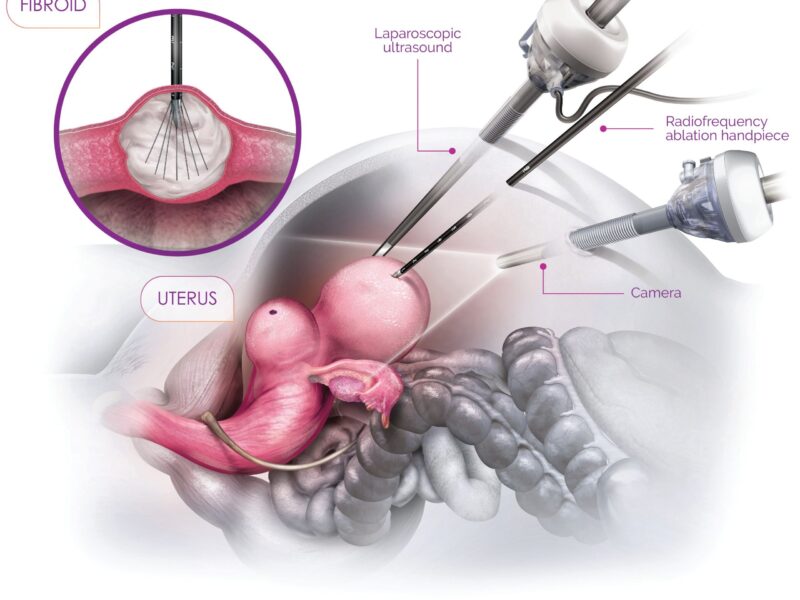Fibroids, medically termed uterine leiomyomas, are benign tumours that develop within the walls of the uterus, affecting a significant portion of women during their reproductive years. While fibroids are typically non-cancerous, they can lead to various symptoms and complications, prompting the need for a deeper understanding of the factors contributing to their development.
This essay aims to delve into the multifaceted nature of risk factors associated with fibroids, exploring how age, family history, ethnicity, hormonal influences, and lifestyle factors interplay in shaping an individual’s susceptibility to this condition.
Age as a Risk Factor
Age emerges as a significant risk factor in the development of fibroids, with prevalence increasing as women age, particularly during the reproductive years. Studies indicate that fibroids are most commonly diagnosed in women aged 30-40, although they can occur at any age.
The hormonal fluctuations experienced during menstruation and reproductive years are believed to contribute to the growth of fibroids, with estrogen and progesterone levels peaking during these stages. As women approach menopause and estrogen levels decline, fibroids may shrink or become less symptomatic, highlighting the intricate relationship between age and hormonal influences in fibroid development.
Family History and Genetic Predisposition
Family history plays a pivotal role in the predisposition to fibroids, with individuals having a first-degree relative (mother or sister) diagnosed with fibroids being at a higher risk of developing the condition themselves. Genetic studies have identified several genes and chromosomal regions associated with fibroid development, shedding light on the hereditary component of this condition.
Variations in genes involved in estrogen metabolism, cell proliferation, and extracellular matrix remodelling have been implicated in the pathogenesis of fibroids, underscoring the genetic underpinnings of familial clustering observed in affected individuals.
Ethnicity and Racial Disparities
Ethnicity stands out as another notable risk factor for fibroids, with significant racial disparities observed in the prevalence and severity of this condition. Studies have consistently shown that women of African descent are disproportionately affected by fibroids compared to women of other ethnicities.
African American women tend to develop fibroids at an earlier age, experience larger and more numerous fibroids, and are more likely to undergo surgical interventions for fibroid-related symptoms. While the exact reasons for these disparities remain unclear, genetic factors, differences in hormonal profiles, and socioeconomic determinants are thought to contribute to the heightened risk of fibroids among African American women.
Hormonal Influences and Reproductive Factors
Hormonal factors exert a profound influence on the development and growth of fibroids, with estrogen and progesterone playing key roles in stimulating the proliferation of uterine smooth muscle cells. Estrogen, in particular, promotes the growth of fibroids by binding to estrogen receptors present in fibroid tissue, leading to increased cell division and angiogenesis.
Consequently, hormonal fluctuations during menstruation, pregnancy, and hormonal therapy can influence the growth and progression of fibroids. Parity, or the number of pregnancies a woman has had, also influences fibroid risk, with nulliparous women (those who have never given birth) being at a higher risk compared to multiparous women.
Additionally, early onset of menstruation (before age 10) and late menopause (after age 55) have been associated with an increased risk of fibroids, highlighting the impact of reproductive factors on fibroid development.
Lifestyle Factors and Environmental Exposures
Beyond genetic and hormonal influences, lifestyle factors and environmental exposures may contribute to the risk of fibroids. Obesity, for instance, is linked to an elevated risk of fibroids, possibly due to alterations in hormone metabolism and adipokine secretion.
Moreover, dietary factors such as consumption of red meat, processed foods, and low intake of fruits and vegetables have been implicated in fibroid development. Certain environmental toxins and endocrine-disrupting chemicals, including bisphenol A (BPA) and phthalates found in plastics, pesticides, and industrial pollutants, may also influence fibroid risk by disrupting hormonal balance and promoting cellular proliferation.
Conclusion
In conclusion, fibroids are a common gynaecological condition influenced by a myriad of factors, including age, family history, ethnicity, hormonal influences, and lifestyle factors. Understanding the interplay between these risk factors is crucial for elucidating the mechanisms underlying fibroid development and tailoring preventive strategies and treatment approaches accordingly.
By addressing modifiable risk factors such as obesity, dietary habits, and environmental exposures, and considering genetic predisposition and hormonal dynamics, healthcare providers can better manage fibroids and improve outcomes for affected individuals.
Moreover, efforts to mitigate racial disparities in fibroid prevalence and treatment outcomes require a comprehensive approach that addresses socioeconomic inequalities, access to healthcare, and culturally sensitive healthcare practices. Through continued research and advocacy, we can advance our understanding of fibroids and strive towards more equitable and effective management of this prevalent condition.
Related Tags
Taiwo Olawuyi
Taiwo Olawuyi is a highly dedicated and passionate professional blogger, renowned for her ability to create captivating, informative, and engaging content in the realm of health and wellness. She holds a Bachelor's degree in Political Science from Olabisi Onabanjo University and a Master's degree in Adult Education from the prestigious University of Ibadan. Her profound passion for health and wellness, coupled with her unwavering dedication to her audience, serves as a constant source of inspiration and enlightenment for readers worldwide.










